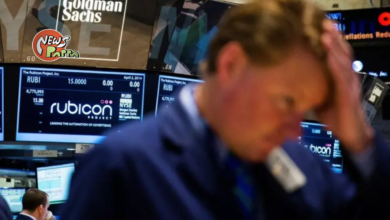GDP increased by 2.1% in the second quarter and is expected to exceed 4% in this quarter

Steady GDP Growth Amid Rising Rates:
The Department of Commerce has reported that the U.S. GDP maintained its robust performance from April to June, registering a 2.1% annual growth rate. This resilience is noteworthy, given the backdrop of escalating interest rates, and the department has upheld its previous expectations regarding GDP.
This growth rate marks a slight deceleration from the 2.2% expansion observed in the first quarter of the year. The pillars supporting this economic uptick in the second quarter include consumer spending, business investments, and state and local government expenditures, all contributing to GDP growth.
Fed’s Rate Hikes and Economic Resilience:
The Federal Reserve’s efforts to combat the 40-year high in inflation have translated into 11 benchmark interest rate hikes since March 2022. Concerns have loomed that these elevated borrowing costs might trigger an economic recession.
The economy and job market have displayed remarkable resilience in maintaining GDP growth. Inflation, while remaining a concern, has moderated without inflicting significant economic hardships, fostering hopes of a “soft landing” for GDP.
However, the impact of high interest rates is evident, particularly in the consumer spending arena, affecting GDP. In the second quarter, the annual growth rate of consumer spending stood at a mere 0.8%, falling below the government’s earlier estimate of 1.7% and marking the lowest level since the first quarter of 2022—a factor contributing to GDP fluctuations.
Upcoming Quarter and Lingering Challenges for GDP:
The ongoing July-September quarter is witnessing a continued GDP acceleration, partly driven by consumer extravagance. Consumers have eagerly returned to theaters to catch summer blockbusters like “Barbie” and “Oppenheimer.”
Moreover, they are willing to make significant expenditures on tickets for concerts featuring Taylor Swift and Beyoncé, further impacting GDP positively.
Economists anticipate that GDP will expand at an annual rate of approximately 3.2% in the third quarter, representing the most rapid single-quarter growth this year. In a more optimistic projection by the Atlanta Fed, the third-quarter GDP growth rate might even surpass 4%.
Nonetheless, this surge in GDP growth is unlikely to be sustained. The final quarter of the year is expected to be less robust as employment and income growth rates taper off, impacting GDP trends.
Economists also predict that the savings accumulated by many Americans through federal relief programs during the pandemic will be depleted in the upcoming quarter, potentially affecting GDP levels.
Several challenges could hinder economic growth, including soaring gas prices, the resumption of student loan payments, a United Auto Workers strike, the termination of pandemic-era child care assistance, and the looming possibility of a government shutdown commencing this weekend, all of which could have repercussions on GDP.
Guyana: The World’s Fastest-Growing Economy
A recent analysis by the International Monetary Fund (IMF), as reported by financial website CNBC, projects that Guyana, a South American nation with a population of only 800,000, may become the world’s fastest-growing economy, with potential growth exceeding 100% by 2028.
This remarkable trajectory is primarily attributed to the substantial profits generated from the country’s oil production and export sectors. By the end of this year, Guyana’s GDP growth rate is estimated to be an astounding 38%.
The IMF’s optimism about Guyana’s economic prospects is shared by BMI, a research unit of Fitch Solutions. Andrew Trahan, the director of the company’s Latin American country risk department, anticipates that Guyana will experience explosive growth in the near term.
Over the next five years, the country’s real GDP is expected to surge by approximately 115%, contingent on the rapid scaling up of oil production.
Guyana is poised to achieve remarkable milestones, with the IMF projecting a GDP growth rate of 62.3% for 2022, the highest in the world. Trahan further predicts that Guyana will maintain its status as the world’s fastest-growing economy in 2023 and likely for at least two more years.
One of the key drivers of this economic boom is the expansion of oil production. BMI forecasts that Guyana’s oil output could surge from 390,000 barrels per day in the present year to over 1 million barrels per day by 2027.
This projection is underpinned by Exxon Mobil and its consortium, which are developing a new offshore oil field in Guyana’s Stabroek Block, an area spanning 6.6 million acres and estimated to contain 11 billion barrels of oil.
Additionally, Guyana’s non-oil sectors are receiving a boost through investments in transportation, housing, and human capital. According to the IMF report, the country’s agriculture, mining, and quarrying sectors are also performing well.
However, these promising prospects are not without risks. Valerie Marcel, an associate researcher at the Chatham House think tank, highlights that Guyana’s ability to sustain this positive growth trajectory hinges on political stability and oil price trends.
She also emphasizes the importance of addressing corruption and guarding against the Dutch disease—a phenomenon of excessive reliance on a single industry’s development. Over time, oil prices are expected to undergo significant fluctuations and eventually reach lows, reinforcing the imperative for Guyana to diversify its economy diligently.




